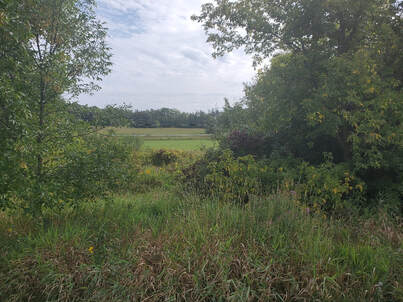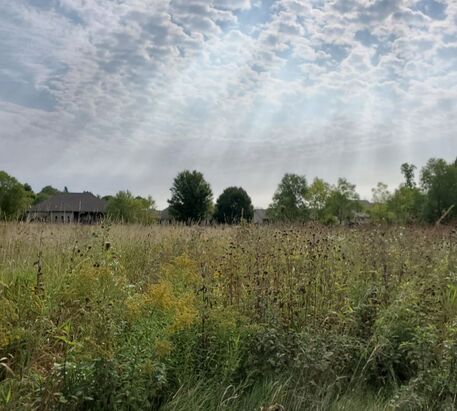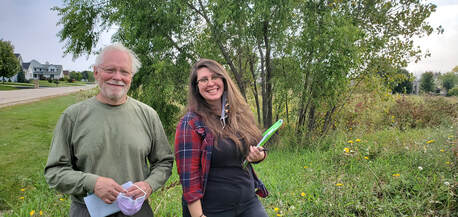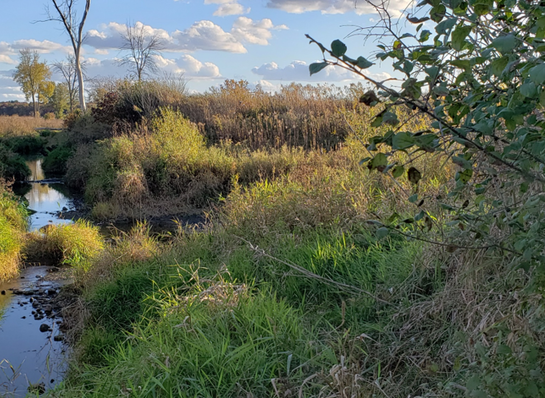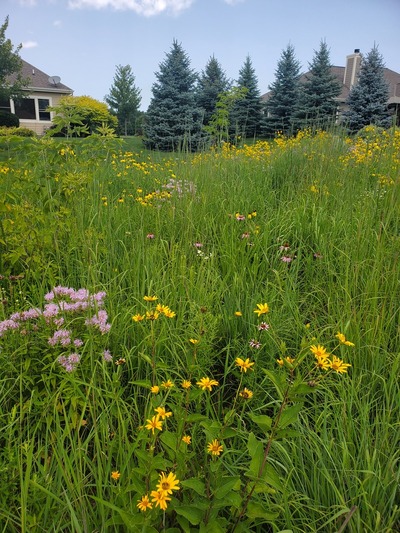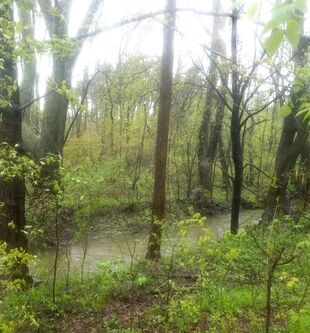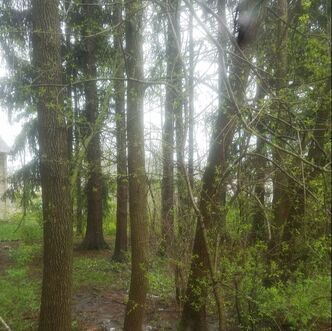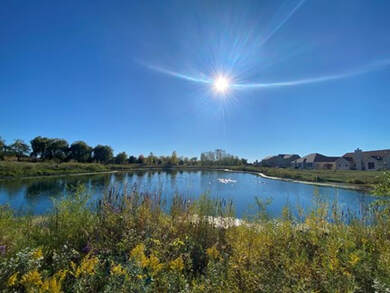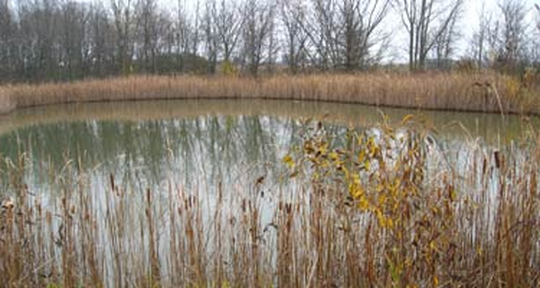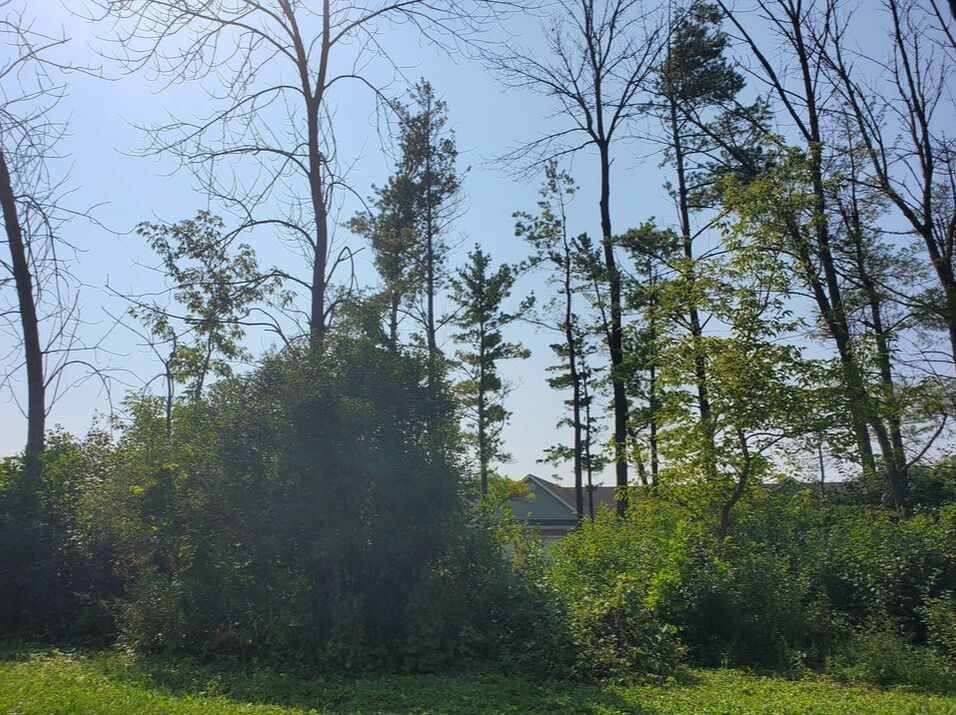What is a conservation subdivision?
Conservation subdivisions, also sometimes known as conservation developments, are a result of township and villages efforts to preserve open space. This is often accomplished through a land development ordinance that requires developers place a percentage of the acreage they would normally subdivide and place homes on into a conservation easement to be held by a qualified organization like a land trust. This often ranges from 40-65% of the total acreage, and the portion placed under a conservation easement is then to be protected and stewarded by the developer and it's eventually successors; the homeowners associations. Instead of a single landowner having ownership over the property every resident collectively owns the easement common areas. Though the homeowners associations may orchestrate stewardship tasks, planning, and budgeting the land is still collectively owned by all residents who then get to enjoy the benefits of living alongside these preserved natural areas.
Our vision for these communities is to cultivate a collective sense of stewardship and ownership for residents and educate them on the value of the woodlands, wetlands, and prairies they live alongside. We continue to work towards realizing this vision working closely with conservation subdivision's homeowner associations to help provide resources and education to homeowners and enable them to better steward these easement areas for the benefit of wildlife, the environment, and their residents.
Our vision for these communities is to cultivate a collective sense of stewardship and ownership for residents and educate them on the value of the woodlands, wetlands, and prairies they live alongside. We continue to work towards realizing this vision working closely with conservation subdivision's homeowner associations to help provide resources and education to homeowners and enable them to better steward these easement areas for the benefit of wildlife, the environment, and their residents.
Our Conservation subdivisions
Ponds I & II The Ponds I is the first conservation subdivision that the Kenosha Racine Land Trust and Caledonia ever completed in light of their then new ordinance. With Ponds I being closely followed by is sister and neighboring subdivision - Ponds II. Collectively the two subdivision's easement areas protect 114 acres of upland, wetlands, agricultural land, and oak woodlands.
Currently, most easement areas in the Ponds subdivisions are in need of ongoing stewardship plans to help control encroaching wetland invasive species such as Phragmites, Reed Canary Grass, and Purple Loosestrife that have become more common the the 20+ years since the creation of these areas. We hope to plan for a small-scale planting of upland prairie in the winter of 2024-25 to re-seed an area that has been undergoing Phragmites and Teasel control efforts for the last three years. If successful, it would re-introduce much-needed biodiversity back into the upland areas of the Ponds subdivisions and hopefully be the first step in ongoing efforts to continue to restore some of these ecologically valuable spaces. |
Wooded Valley Estates North & SouthLocated in part along a busy Highway 31, these two sister conservation subdivisions have provide high quality open space in an ever urbanizing area. Neighboring the preserved Tabor Woods to the west, these two subdivisions contain 16 acres of protected woodlands, wetlands, and upland prairie. In addition, the 1.5 acre outlot 4 of Wooded Valley Estates North was donated to Caledonia Conservancy who now stewards it.
Wooded Valley South has an ongoing stewardship plan that focuses heavily on eliminating woody invasive species such as buckthorn, honeysuckle, and oriental bittersweet from their woodland outlots that border Tabor Woods which is home to blue-stemmed goldenrod, a state-listed endangered species. Wooded Valley North continues to steward their restored upland prairies, completing regular control of common invasive species and completing regular controlled burns that create a robust and diverse landscape within these outlots. |
Stonecrest ShoresWith a cadre of committed residents, this conservation subdivision has continued to steward the 124 acres of wetlands, floodplain forests, agricultural land, and restored upland prairies along the East Branch Root River Canal. Invasive species removal, planting of 1,000 native trees, and supplemental seeding of a native prairie planting have helped to enhance the easement areas within Stonecrest Shores.
Resident Larry Strickland, who passed away in 2021, help lead many of the subdivisions restoration efforts. Larry was passionate about the protection and restoration of the environment, as reflected by his many successful efforts to enhance the riparian and prairie areas of Stonecrest Shores. His legacy will be carried on through ongoing stewardship. |
Woodland Waters
With 95 acres of restored prairies, oak woodlands, wetlands, and sedge meadow this conservation subdivision protects a wide variety of habitats. Significant efforts to restore the upland prairies begun in November of 2010 via a prescribed burn in an effort to reduce invasive species and support existent native plants. To this day those efforts have proven successful, with large and diverse prairies bordering woodlands that are actively managed for invasive species.
Residents have worked with Hoy Audubon and Seno K/RLT to create a bluebird trail within the subdivision. Every year residents monitor their bluebird boxes and collect data for Hoy Audubon on bluebird populations in Wisconsin! |
|
Blue River Preserve
With a trail along the wooded hillside and the Root River below, Blue River Preserve contains 28 acres of open space worthy of preservation. With 22 of said acres along the Root River dedicated to Racine County for public use, the remaining acreage has been entrusted to residents for improving the easement areas through invasive species management and native plant reintroduction throughout the subdivision's easement areas.
Blue River Preserve is currently working to update their stewardship plan to better reflect the current conditions of the easement areas and address encroachment of invasive species such as Phragmites, Mutliflora Rose, and Dame's Rocket into these areas as well as the Racine County-managed Outlot 4. With assistance and dedication, the restoration and stewardship of these areas will greatly enhance the riparian area along the Root River as well as the outlots shared by residents. |
Woodland PinesThis charming and intimate subdivision is host to a petite collection of 7 acres of woodland and wetland habitat. This neighborhood has the potential to host many beautiful Wisconsin native woodland species with careful and creative land management of their Turtle Creek riparian area and woodland edges.
|
Prairie Pathways
Home to 58 acres of protected wetlands, restored prairie, and large stormwater management ponds, Prairie Pathways continues to slowly restore the easement areas within by increasing native plant diversity and active management for invasive species. Creating an increasingly important source of viable open space and habitat in Franksville.
|
Woodlands Eagle Lake
Nestled amongst woods and water, this conservation subdivision plays an important role in maintaining the rural flavor and varied landscape of the Town of Dover. Protecting 9 acres of wetlands, mature woodlands, and old pine plantation, this subdivision neighbors a significant acreage of restored wetlands to the East. The mature oak-hickory woodlands on the property are part of a large SEWRPC Primary Environmental Corridor surrounding Eagle Lake.
|


